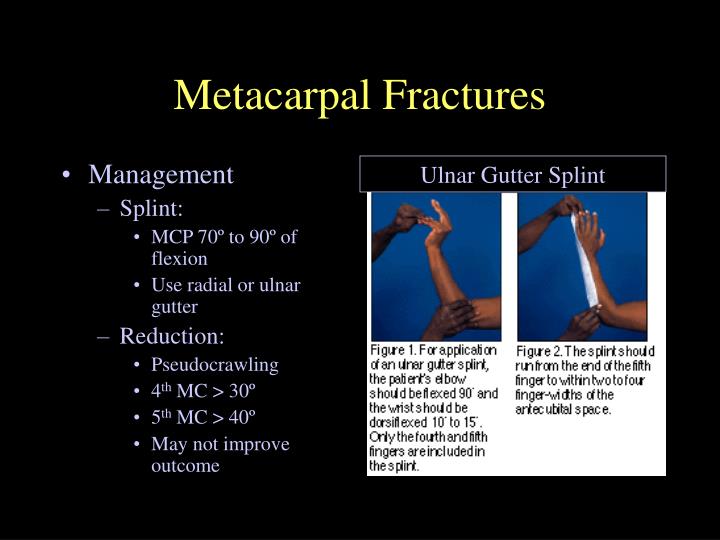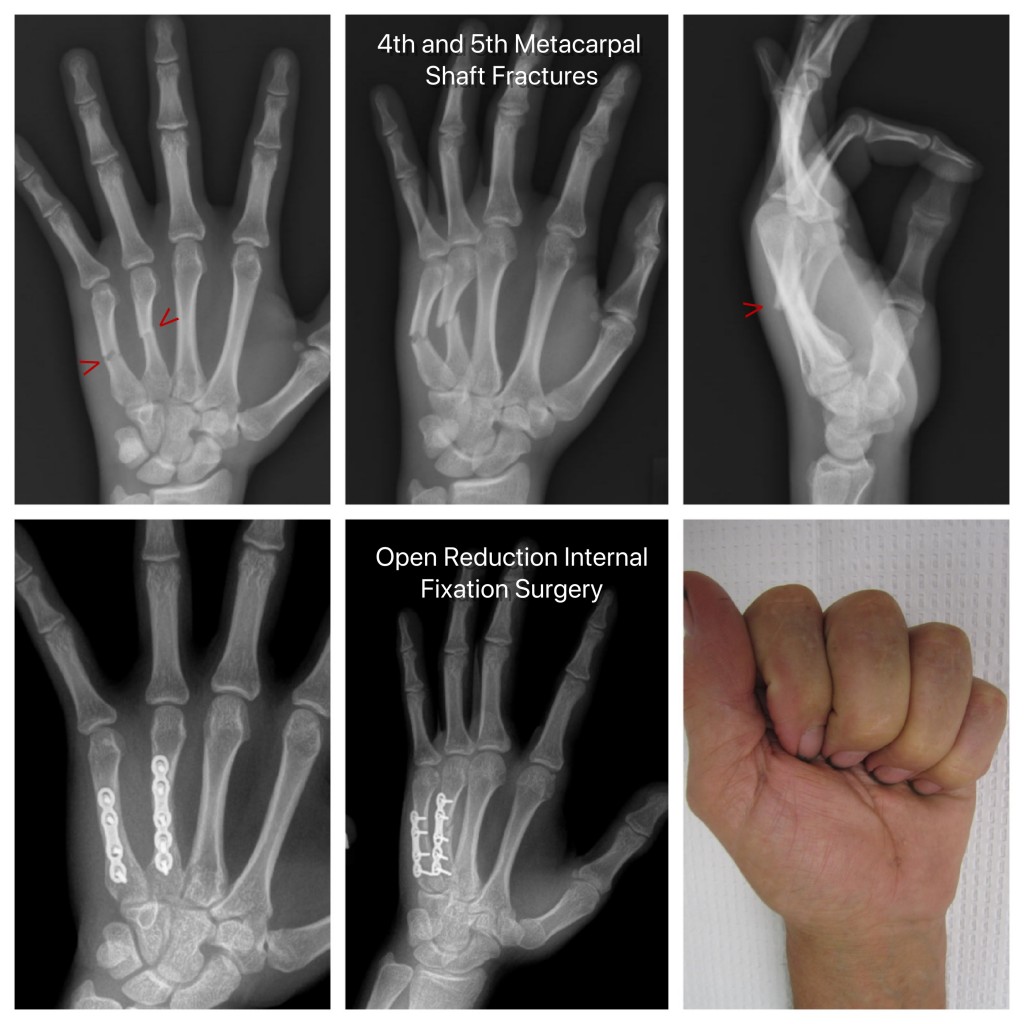

Since patients can start therapy much earlier in these scenarios, the post-operative motion is much improved with an earlier return to work and activity. There have been numerous advances in treating hand fractures with new forms of “rigid fixation” that allow not only excellent rates of bone healing but also allow for a much earlier range of motion by taking advantage of the rigidity of the fixation constructs. This often led to good bone healing but poor motion in the postoperative setting, even with months of therapy. Unfortunately, this form of holding the bones together is not “rigid” and therefore, patients require a cast after surgery. Historically, metacarpal fractures that needed surgery were treated with “pins” also known as “K-wires.” This required the surgeon to reset the bone in the operating room and hold the bones together with these pins. Are there special ways to treat metacarpal fractures to get better results?


In some cases, a well-performed operation can get you back to your normal activities faster and with better results than if you have a cast alone. Other fractures may benefit from surgery to put the broken bones back together and hold them in correct place. In some instances, the fingers and hand may undergo an “early range of motion” even while the fracture is healing to help prevent stiffness and loss of motion. If the fracture is stable, a cast may be used to hold a fracture that has been set. To temporarily treat an acute metacarpal fracture, a splint can offer support and protect the bones. This may be done in the ER by an ER physician or by one of our hand surgery specialists. If you suffer a “displaced” metacarpal fracture, the first step may be to “reduce” or “set” the fracture. The “you” factors – your age, hobbies, functional demands, activities, health, and what you do for work.How “bad” the fracture is – whether it is displaced, unstable, or open.Generally speaking, metacarpal fracture treatment will be guided by a few main factors: Additional tests, such as a CT scan, may be required to get high-level detail of the fractured metacarpal and fracture fragments to determine the type of treatment that is necessary. The diagnosis of a broken metacarpal will also include reviewing your medical history and a physical examination. Intra-articular: A more complex type of fracture that involves the major joints of the hand or wristįor a broken hand, X-ray provides the most definitive diagnosis.
#3rd metacarpal fracture splint skin#


 0 kommentar(er)
0 kommentar(er)
